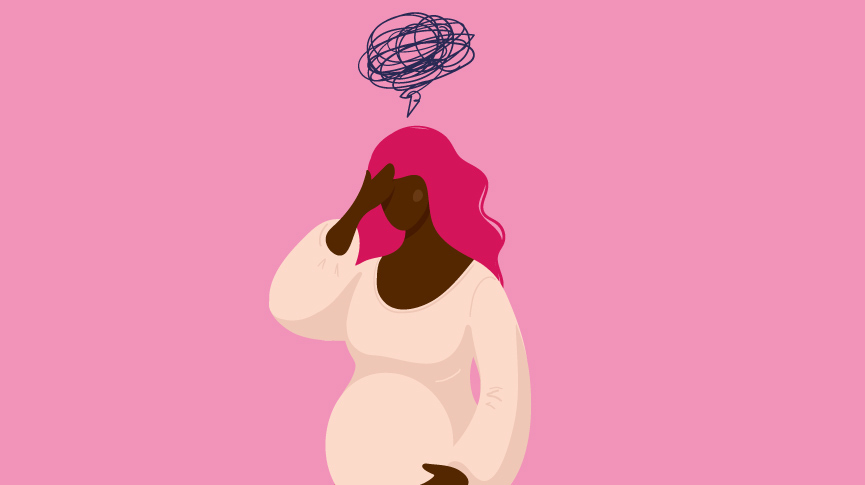Pregnancy: What is Gestational Diabetes?

During pregnancy, your body will go through so many changes and transitions that you may not know how to keep up with it! From growing breasts to a growing belly. Stretchmarks and skin changes. Loose ligaments and a foreign pelvic floor.
All of these changes are totally normal and oftentimes expected, but sometimes pregnancy can come with bodily changes you may not have anticipated.
One of those possible changes is gestational diabetes.
You’re probably familiar with the basics of diabetes. For a refresher, it’s a chronic illness where your blood glucose (sugar) is too high. There are three types – Type 1, Type 2, and gestational diabetes. Diabetes is usually manageable with lifestyle changes, and possible insulin medication, but it can lead to possible long term health issues.
So what makes gestational diabetes different?
What is Gestational Diabetes?
Gestational diabetes mellitus (GDM), more commonly known as gestational diabetes, is a form of diabetes that shows up in people who did not have diabetes before becoming pregnant. Affecting 2% to 10% of pregnancies in the U.S., gestational diabetes typically develops between 24 to 28 weeks gestation. This is also the time your provider will most likely test your blood sugar for it, unless it is suspected earlier on, or you have a history of gestational diabetes with prior pregnancies.
Just like other forms of diabetes, GDM hinders the body’s ability to regulate blood sugar, causing it to be too high.
Risk Factors for Gestational Diabetes
If you had GDM in prior pregnancies, your chances of developing it in subsequent pregnancies increases. Gestational diabetes is recurring in an estimated 30-69% of pregnancies, where the person had gestational diabetes with prior pregnancies.
Other risk factors include pregnancy at an older age (over 35), a family history of diabetes, and excess weight before pregnancy.
Symptoms of Gestational Diabetes
While not every person with gestational diabetes will have symptoms, they may experience unusual thirst and frequent urination, vaginal, bladder, and skin infections, nausea, fatigue, and blurred vision.
Keep in mind that with all the changes in your body, it can be hard to tell what may be a possible symptom, and what is a normal part of pregnancy.
Pregnancy and Birth Complications
Gestational diabetes can lead to possible complications during pregnancy.
Pregnancy-induced hypertension (high blood pressure), or preeclampsia, occurs in about 10 to 30 percent of people with gestational diabetes. This can occur during pregnancy or postpartum and can lead to eclampsia. A more severe, and possibly life threatening form of high blood pressure. The only treatment for preeclampsia is delivery, which may necessitate the need for an induction or a planned Cesarean section.
People with GDM may have an increased risk of an emergency C-section as well.
Gestational diabetes may increase the chance of a baby with a large birth weight, which can lead to possible birth complications like shoulder dystocias. Babies may also have low blood sugars (hypoglycemia) and mineral levels upon delivery. They may have a treatable condition called jaundice that causes yellowing of the skin, or respiratory distress syndrome upon delivery. The chance of preterm birth and stillbirth is also slightly increased.
Some people with gestational diabetes develop a condition called polyhydramnios, which is essentially excessive amniotic fluid around the baby. This can slightly increase the risk of birth complications like preterm labor, premature rupture of the amniotic sack, and placental abruption.
You may need regular ultrasounds scans in the last trimester of pregnancy to monitor baby’s growth and amniotic fluid levels.
Children whose parent had gestational diabetes during pregnancy may be almost twice as likely to develop Type 1 Diabetes by age 22.
Managing Gestational Diabetes
Your doctor will show you how to self monitor your blood glucose levels to ensure they stay in a healthy range.
Diet is one of the best ways to help manage gestational diabetes. You’ll want to eat a protein with every meal, whether that be plant-based or from animal products. It’s important to prioritize fruits and vegetables and limit processed foods.
Of course, with pregnancy, you may have an increased appetite. You can help regulate your blood sugar, and any nausea you may be experiencing, by keeping healthy snacks on hand like nut butters with fruit, greek yogurt, or veggies with hummus.
Experts also recommend 30 to 60 minutes of moderate-intensity exercise, including aerobic and resistance exercises, at least three times a week. Some good options are brisk walking, swimming, and prenatal yoga.
While many people are able to regulate gestational diabetes with diet and exercise, that’s not the case for everyone. Thank goodness for modern medicine, where people have access to medications like insulin. The hormone insulin is normally produced in the pancreas, but can also be injected when used for diabetes. It helps cells take in and use glucose.
There are also helpful smartphone apps that have been developed to help people manage their gestational diabetes. These apps can help you with meal planning, blood glucose tracking, and other pregnancy-related tools.
You also may have more regular appointments with your provider so that they can track yours and baby’s health.
Long Term Health
About half of people who had gestational diabetes will develop Type 2 diabetes later on in life.
You can help prevent future health issues by maintaining a healthy diet and getting regular exercise. One of the other important steps you can take is getting your blood sugar tested regularly. You’ll want to get your blood sugar tested between 6 to 12 weeks postpartum, and then every 1 to 3 years thereafter.
If you are diagnosed with gestational diabetes, know that you didn’t do anything wrong, and you can still have a totally healthy pregnancy and baby. The best thing you can do is focus on the day to day of taking care of your health – both for your baby and for you!
Facts Checked By:

Dr. Shree Datta is a Consultant Obstetrician and Gynaecologist in London, specialising in women’s health including all menstrual problems such as fibroids and endometriosis. Dr. Shree is a keen advocate for patient choice, having written numerous articles and books to promote patient and clinician information. Her vision resonates with INTIMINA, with the common goals of demystifying periods and delivering the best possible care to her patients.
Article written by:

Natasha (she/her) is a full-spectrum doula and health+wellness copywriter. Her work focuses on deconstructing the shame, stigma, and barriers people carry around birth, sex, health, and beyond, to help people navigate through their lives with more education and empowerment. You can connect with Natasha on IG @natasha.s.weiss.


